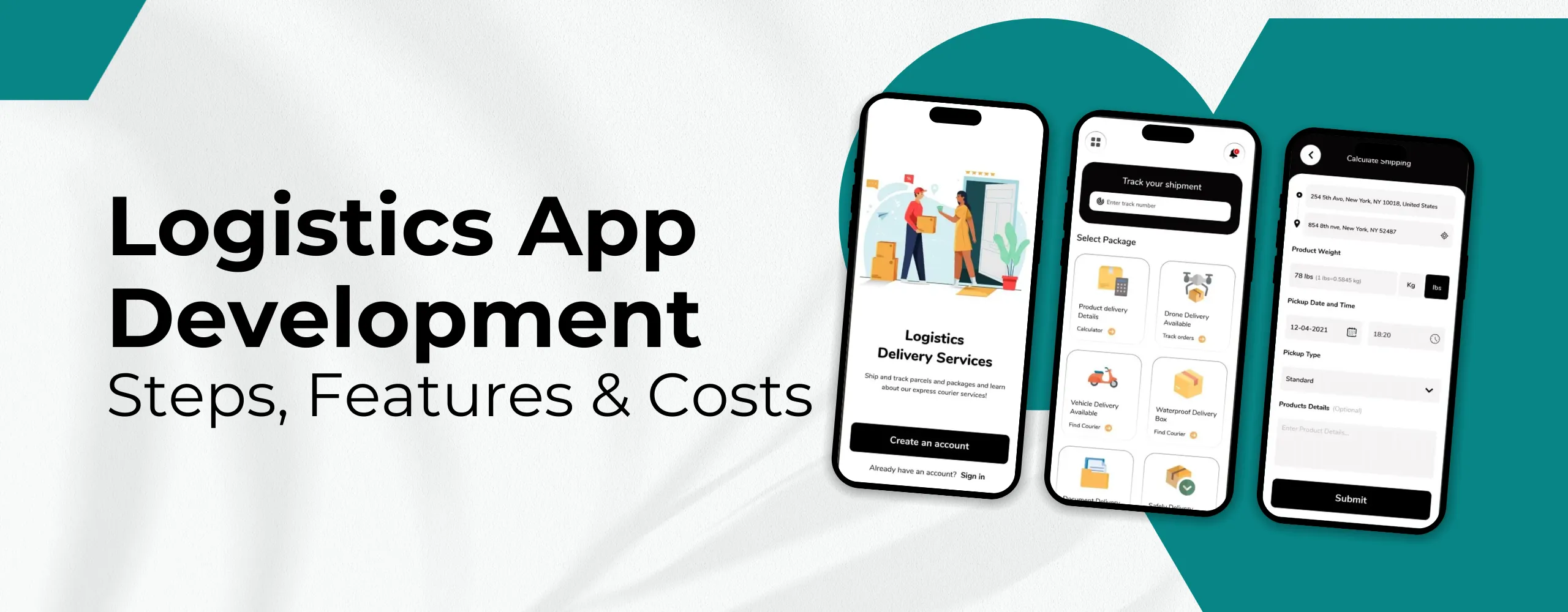
Back in 2010, Google launched Angular, which caught on fast among developers who needed a substantial framework to build dynamic web apps. A few years down the line, in 2013, Facebook came up with React, a leaner alternative focused mostly on creating UI. Since then, each framework has taken its place in the spotlight.
Both have evolved a lot over time. Angular offers a complete, dependent framework that is outstanding for huge-scale applications. React, alternatively, is more flexible and has a big library ecosystem that helps you to plug in precisely what you need.
In 2025, both Angular and React are nevertheless going strong, but they serve little different purposes. React has specialties in speed, simplicity, and component reusability. Angular sticks out for its whole solution out of the box.
If you are confused about what framework you should choose for your next project, you are not alone. This debate is not about being better—it’s about which one fits your team, goals, and app requirements best. In this blog, we’ll help you break it down clearly so you can make the right decision.
What is Angular?
A web framework called Angular allows programmers to create reliable, fast-moving apps.
Angular is a fully developed front-end structure from Google that simplifies the process of creating responsive and scalable SPAs. The strength of Angular rests in its all-in-one strategy, including the bundled feature to handle complex projects from start to end and an organized method. Because it is created on TypeScript, Angular produces more stable, accurate code, which is especially beneficial for high-traffic platforms.
Key Features
- Cross-Platform: With Angular, you can structure apps that work on websites, phones, and computers. So, you write your code once and use it in lots of diverse places.
- Improved Dependency Injection: DI is just a way to give parts of your app (like components or services) the tools they need to work.
In Angular, this technique is integrated, top-notch, and simple. It facilitates you in keeping your code easy, organized, and clean, to replace it as things change.
- Improved Data Binding: Angular keeps your data and interface connected. When a user updates something, the data changes too—and vice versa. No extra code is needed to keep them in sync. This saves developer’s time and writes less repetitive code.
- Top-Notch Browser Support: Angular works amazingly on all larger browsers such as Chrome, Firefox, Safari, Edge, and even Internet Explorer 11.
- Mobile Development: Angular can be used to create a mobile app across platforms using Ionic, such as a framework.
- TypeScript: The Angular apps are written in TypeScript, which is a superset of JavaScript with alternative static typing. TypeScript facilitates seeing mistakes within the development process quickly and improves code quality.
- Routing: This is the process of switching between ideas in an Angular application. Angular has built-in routes that simplify the routes and manage navigation events.
- Directives: These are DOM element markers that modify the behavior of the DOM or a component. Angular has various pre-built directives as well as the option to create your own.
Use Cases
- Build fast and interactive single-page web applications. These apps are loaded once and update the material without updating the page.
- Develop dashboards at the corporate level and administrator panels. Angular helps manage complex data and user roles efficiently.
- Create progressive web apps with offline capabilities. These apps work smoothly even with poor or no internet connection.
- Powerful and responsive e-commerce websites. Angular handles product filtering, shopping carts, and user checkouts with ease.
- Design user-friendly content management systems. Content creators can add, edit, and manage content without technical skills.
- Build real-time applications like chat or live tracking. Angular’s reactive features keep the user interface updated instantly.
What is React?
React is an open-source JavaScript library designed to make creating ever-changing and hands-on user interfaces easier and faster. Meta and maintained by a strong developer society, it allows developers to produce UI components that can update effectively in response to data changes.
What makes React noticeable is its declarative approach—instead of telling the browser how to update the user interface, you describe whatever you want and handle the rest behind the scenes.
Key Features
- Virtual DOM: React makes use of a lightweight replica of the actual DOM to track modifications and replace only what’s vital. This enhances UI rendering overall performance through a method referred to as reconciliation.
- Component-Based Architecture: The React application is designed using reusable components so that developers can divide the user interface into modular pieces. This code improves reusability, stability, and scalability.
- JSX (JavaScript XML): React makes use of something called JSX; it’s kind of like blending proper HTML into your JavaScript.
At first glance, it looks like ordinary web code, but it honestly works with JavaScript behind the scenes. JSX makes your code easier to read and helps you detect problems quickly when something goes wrong.
- One-Way Data Binding: React follows the unidirectional data flow, which means that the data goes from the parent to the child components through the props. It leads to better control, more accurate behavior, and easy bug fixing.
- State Management: React helps you to keep track of changes in records inside every component. You can try this using useState or this.state, depending on the form of the issue. It enables updating the UI smoothly without reloading the entire web page.
- React Hooks: Hooks bring state and side-effect management to functional components. Key hooks include useState for local state, useEffect for lifecycle methods, and useContext for accessing shared data.
- React Router: React Router enables smooth navigation in SPAs. It allows for dynamic routing without requiring full-page reloads, improving the user experience.
Use Cases
- Apps with dynamic, frequently changing UIs benefit from React’s efficient rendering. This includes dashboards, analytics tools, and social platforms.
- Projects that need custom tools and libraries work well with React. Its flexible, unopinionated ecosystem gives developers full control.
- React is a good option for startups and agile groups. It supports fast prototyping and fast, iterative development.
- React supports server-side rendering with systems such as Next.Js. This makes it best for apps that need search engine optimization.
- React Native allows developers to construct cross-platform apps without problems. You can share logic between web and mobile applications.
- React is great for interactive eCommerce platforms. It supports features like real-time filters, fast updates, and product recommendations.
Difference between Angular and React: Quick Comparison
You should be aware that many small to large businesses have used both React and Angular to create applications when comparing the two frameworks. You know, according to BuiltWith information, over 11 million websites use React, while Angular is used by just 327,765.
So, the question is, should we go along with React or Angular? There were numerous discussions on Angular vs. React. Thus, as a way to help you in selecting the excellent choice in your upcoming task, we can make clear the differences between Angular and React.
| Aspects | React | Angular |
|---|---|---|
| Codebase | JavaScript Library | TypeScript Framework |
| Introduced In | 2013 | 2009 |
| Learning Curve | Moderate | Steep |
| Data Binding | One-way data binding | Two-way data binding |
| Architecture | View Only (MVC) | Full MVC Architecture |
| State Handling | External (Flux/Redux) | Built-in Services |
| Concept | Brings HTML into JavaScript Works with the virtual DOM Server- side rendering | Brings JavaScript into HTML Works with thereal DOM Client-side rendering |
| Learning Curve | Moderate | Steep |
| DOM Type | Virtual | Real |
| Dependency Injection | Not supported | Fully supported |
| Real-World Usage | Facebook, Skype,Instagram, Walmart | IBM, PayPal, Freelancer, Upwork |
Let’s know about it in some detail:
1. Performance & Speed
React vs. Angular: How They Handle Updates
React makes use of something known as a Virtual DOM, which is like a copy of the actual web page. When something changes on the page, React doesn’t reload everything. It just checks what’s new and updates only those parts. That’s what makes it super fast—perfect for apps like chat or social media.
Angular uses the Real DOM, which means that it updates the entire web page shape while making some modifications. That can be slower, but Angular has smart tools like change detection and a new engine called Ivy that help it stay fast even with bigger updates.
Load Time & Rendering—How Fast They Show Up on Your Screen
React 19 comes with cool features like server components and a better way to write code called the new JSX transform. These assist in making the documents smaller, so websites load quicker and sense smoother.
Angular is also getting better. In 2025, it will have incremental hydration (which means only the needed parts of a page load first) and something called zoneless change detection to make apps load quicker and work more efficiently after loading.
2. Scalability & Maintenance Made Simple
Angular: Built for Big Projects
Angular is like a full toolbox that’s great for building really big apps, like the kind of big companies use. It has strong rules and uses a language called TypeScript, which helps teams write clean and organized code. With tools like standalone components and signal-based forms, developers can build parts of an app that work well together and are easy to update.
Future-Proofing Your Codebase
Angular’s way of doing things is more strict, which actually helps a lot when an app gets really big. It’s simpler to repair and update later. React is more flexible, which is splendid at the beginning; however, if the group isn’t cautious, it could turn messy over the years and more difficult to control in the end.
3. Community Support & Ecosystem
Popularity Among Coders
React is like the most popular kid in school when it comes to front-end coding tools. About 42% of programmers use it, in comparison to the best 19% who use Angular. If you look at websites like GitHub and Stack Overflow (where coders share code and ask questions), React has many more hobbies than Angular. This way, there are more people using React, more help to be had online, and a bigger community typically.
Job Market Trends
If you’re learning to code and want a job one day, React is a great skill to have. Many companies are looking for React developers and offering good salaries. Angular additionally has strong activity possibilities, in particular with large corporations and at business-level tasks. In truth, job openings for the Angular tech team have gone up by 35% currently, which means demand is still high.
Third-Party Library Support
React has lots of more features (referred to as libraries) that make it simpler to build websites. Some popular ones are Redux, React Router, Axios, and Styled Components. These assist with things like coping with information or including patterns. Angular has many tools constructed right into it; however, you can additionally use extras like Angular Material or NgRx to make your task even better.
Which One Should You Choose for Your Next Project?
Choosing the right tool to construct your app is truly critical.
If you’re growing a massive and complex app, like one with lots of pages, forms, and functions, Angular is an exceptional choice. It comes with everything already contained, like platforms that will help you control pages, take care of person entry, and keep your code organized. You don’t need to search for many extras; it’s all built in.
But in case you need something lighter and faster, and you care most about approximately how your app seems and feels, then React is a better choice. It helps you construct consumer interfaces (what people see and click on), and you can upload the simplest extra features you want.
At last, the best option relies on how big your challenge is and what you want it to do.
Conclusion
Angular and React are two famous tools used to build rapid and interactive websites. They assist engineers in creating functions like live updates, easy navigation, and dynamic pages. While each is effective, they work in distinctive ways and observe unique styles of coding.
Choosing between them relies on the form of assignment, how the team works, and what skills the developers have. Angular is awesome for shape and complete management, whilst React gives greater flexibility. The exceptional choice relies on what fits your project requirement best.If React is the right fit, don’t just build a site—build a high-performing product. Partner with a React development company that turns every user interaction into your competitive edge.









